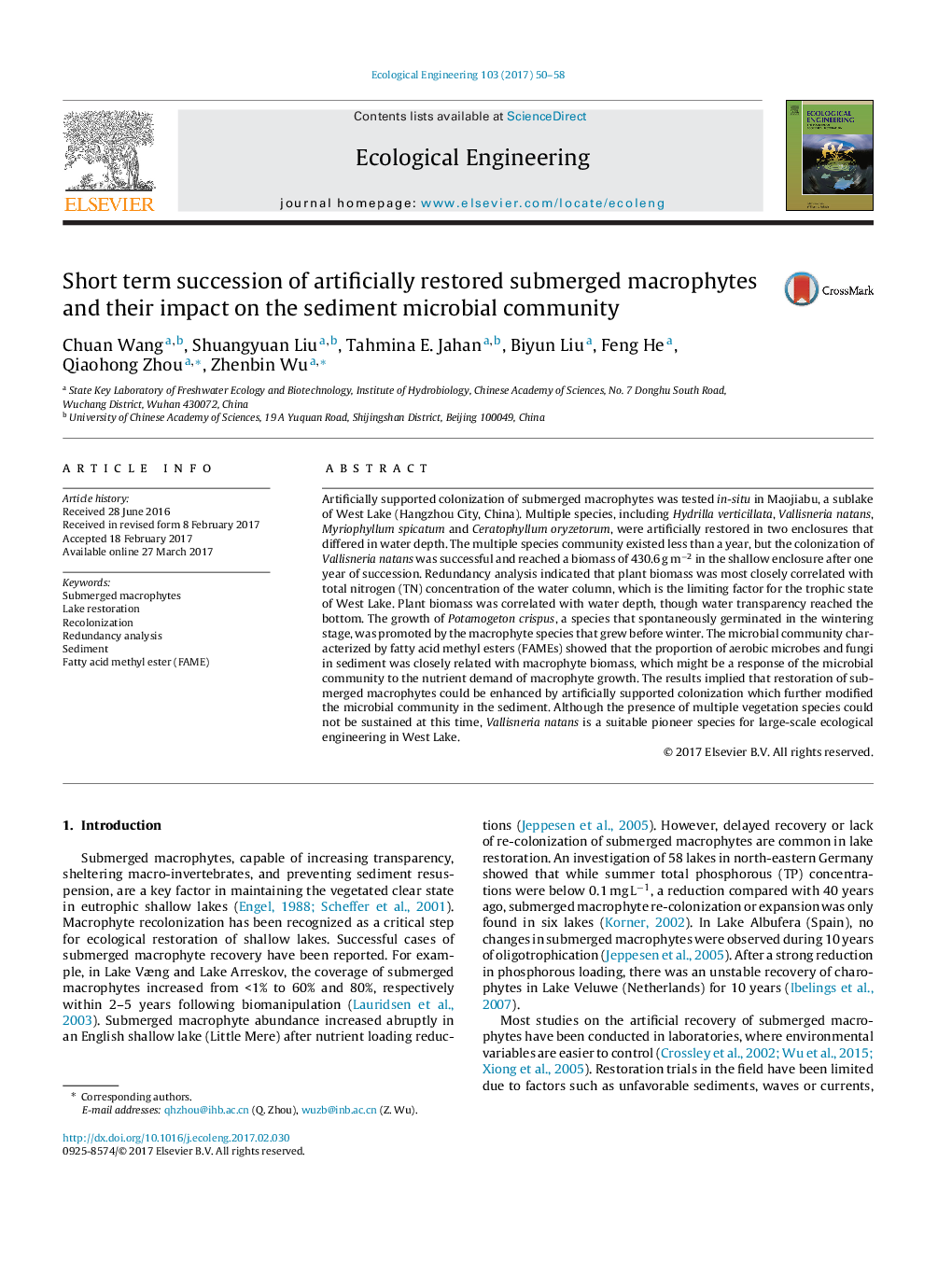| کد مقاله | کد نشریه | سال انتشار | مقاله انگلیسی | نسخه تمام متن |
|---|---|---|---|---|
| 5743563 | 1412315 | 2017 | 9 صفحه PDF | دانلود رایگان |
- V. natans was successfully restored by artificial planting.
- P. crispus was promoted by the species grew before winter.
- TN and water depth were the most important factors for vegetation recovery.
- Colonization of submerged macrophytes increased aerobic and fungi in the sediment.
Artificially supported colonization of submerged macrophytes was tested in-situ in Maojiabu, a sublake of West Lake (Hangzhou City, China). Multiple species, including Hydrilla verticillata, Vallisneria natans, Myriophyllum spicatum and Ceratophyllum oryzetorum, were artificially restored in two enclosures that differed in water depth. The multiple species community existed less than a year, but the colonization of Vallisneria natans was successful and reached a biomass of 430.6 g mâ2 in the shallow enclosure after one year of succession. Redundancy analysis indicated that plant biomass was most closely correlated with total nitrogen (TN) concentration of the water column, which is the limiting factor for the trophic state of West Lake. Plant biomass was correlated with water depth, though water transparency reached the bottom. The growth of Potamogeton crispus, a species that spontaneously germinated in the wintering stage, was promoted by the macrophyte species that grew before winter. The microbial community characterized by fatty acid methyl esters (FAMEs) showed that the proportion of aerobic microbes and fungi in sediment was closely related with macrophyte biomass, which might be a response of the microbial community to the nutrient demand of macrophyte growth. The results implied that restoration of submerged macrophytes could be enhanced by artificially supported colonization which further modified the microbial community in the sediment. Although the presence of multiple vegetation species could not be sustained at this time, Vallisneria natans is a suitable pioneer species for large-scale ecological engineering in West Lake.
Journal: Ecological Engineering - Volume 103, Part A, June 2017, Pages 50-58
